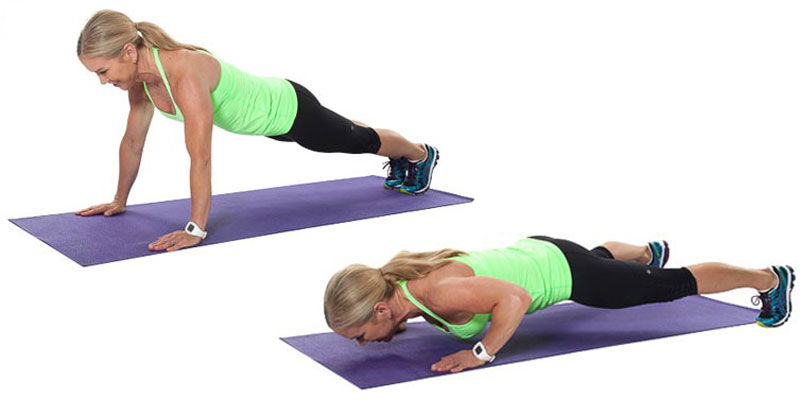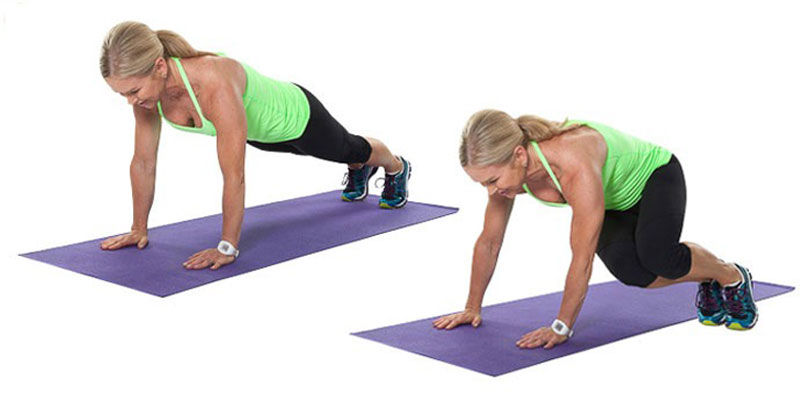It is widely accepted that two of the most efficient ways to burn fat and get lean are strength training and high-intensity interval training. Plyometrics, a form of strength training that requires jumping and repetition, is really a combination of the two. It increases heart rate and therefore often results in a high-intensity interval.
Plyometric training uses explosive movements to build strength and to condition the muscles and heart. The exercises are typically jumping movements—both feet need to leave the ground at the same time. During each landing the muscles get a stretch, which allows the exerciser to jump with even more power on the next one. The continual stretching and contracting of the muscles quickly whips muscles into shape.
At one time, plyometrics were primarily used by athletes to improve power in their sports, but now they are a solid part of the fabric of the fitness world. Fitness professionals and enthusiasts everywhere use plyometrics as either a stand-alone workout or as a part of other workout regimens. Plyometrics boost muscle power, strength, balance and agility.
How Often Should My Clients Do Plyometrics?
Plyometrics should not be performed every day because muscles need a break from all that high impact. Similar to other types of strength training, a 48-hour rest between intense plyometric sessions is recommended. For beginning clients, help them work on building a solid foundation of fitness before adding plyometric moves to their programs.
Can I Modify With Low-impact Moves?
While it is possible to modify high-impact activities to make them low-impact, this takes away the benefits of plyometric activity. In other words, you might be doing a great exercise, but it won’t be a plyometric workout. That being said, don’t hesitate to modify your clients’ workouts—it’s better to start slowly and take more recovery time as needed.
Are Plyometrics Primarily Strength or Cardio?
Plyometrics are used primarily to build strength, but they are also a great way to introduce anaerobic interval training to your clients’ programs. Anaerobic intervals increase cardiovascular capacity and will get your clients into shape quickly.
Here is a 15-minute plyometric workout to use with your clients. Perform each exercise for 30 seconds with a 30-second rest in between. Have clients perform the series of five exercises, rest for two minutes and then repeat the series a second time. Don’t forget to have your clients cool down and stretch at the end of the workout.
Begin with one minute of light jogging and stationary squats to warm up.
BOX OR STEP JUMPS

Begin in a deep squat position with a step or sturdy platform or box in front and arms bent next to the sides of the body.
Swing the arms and jump as high as possible, landing quietly and with control in a squat position on the step. Both feet should land at the same time and weight should stay in the heels.
Jump down, landing in start position and repeat quickly. Do as many as possible for 30 seconds.
Rest for 30 seconds.
PUSH-UP JACKS

Begin in a plank position with the shoulders over the wrists, feet together and the body in a straight line.
Lower to a push-up while jumping the feet to a wide position. Keep the abdominals tight and land with the spine straight and chest close to the floor.
Jump the feet back together while straightening the arms to push up to the starting position. Repeat as many times as possible for 30 seconds.
Rest for 30 seconds.
SPLIT JUMPS
Start in a stationary lunge position, with the right foot in front and the left foot behind resting on the ball of the foot. Both legs should be bent at a 90-degree angle at the bottom of the lunge.
Swing the arms and jump as high as possible, switching foot positions while in the air. When landing, the left foot will be in front. Land in a bent-knee lunge. Note: Be sure that the feet leave and land at the same time.
Repeat quickly but get a full range of motion each time. Do as many as possible in 30 seconds.
Rest for 30 seconds.
DIAMOND JACKS

Start with the legs wider than shoulder-distance apart. Turn the toes slightly out and bend the knees in a wide plié position; hold the hands in front of the chest.
Using the lower-body muscles, jump up as high as possible and touch the heels together before landing in the starting position. Repeat quickly and perform as many as possible in 30 seconds.
Rest for 30 seconds.
CORE BODY HOPS

Begin in a plank position with the shoulders over the wrists, feet together and the body in a straight line.
From this position, bend the knees and hop both feet up to the left hand while keeping the feet together. Hop back to the starting position and repeat to the right.
Perform as many as possible in 30 seconds. Be sure to keep the core tight and don’t let the back sag.
Rest for two minutes and repeat the entire series from the beginning.




 by
by 








 by
by